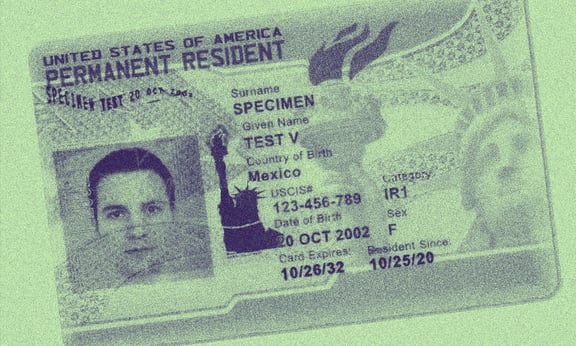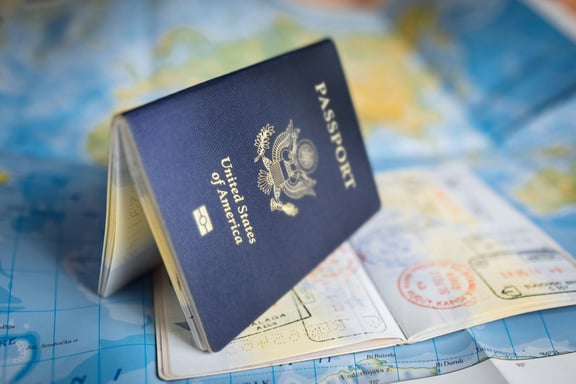For multinational corporations and global businesses looking to transfer key personnel to their United States operations, the L-1 visa offers an effective immigration solution. Designed specifically to facilitate intracompany transfers, this visa enables executives, managers, and specialized knowledge employees to work temporarily in the United States, helping companies maintain consistency in management and expertise during international expansion.
In this comprehensive article, we’ll thoroughly explore the L-1 visa, providing clear guidance on eligibility requirements, detailing each step of the application process, highlighting important post-approval considerations, and advising how to navigate potential pitfalls for a successful immigration journey.
What is the L-1 Visa?
The L-1 Visa is a non-immigrant visa that allows multinational companies to transfer executives, managers, and specialized knowledge personnel from their foreign offices to U.S.-based offices. This visa is frequently utilized by corporations aiming to maintain operational continuity and leadership coherence within their global structure.
There are two distinct classifications within the L-1 visa category:
- L-1A Visa: Designed for executives and managers holding senior positions.
- L-1B Visa: Tailored for employees possessing specialized knowledge related to the company’s products, processes, or services.
Understanding these categories is important, as each has specific eligibility requirements, documentation standards, and implications for permanent residency options.
Eligibility Criteria for the L-1 Visa
Determining eligibility for the L-1 visa involves carefully assessing both employee qualifications and corporate structures.
Employees must satisfy certain conditions based on their intended visa category:
- L-1A Visa (Managers and Executives): Applicants must demonstrate at least one year of continuous managerial or executive employment with the multinational entity abroad during the three years preceding the application. They must also occupy a managerial or executive position in the U.S.
- L-1B Visa (Specialized Knowledge Employees): Employees must have worked abroad continuously for at least one year within the last three years in a position involving specialized knowledge crucial to the company’s operations.
Ensuring clear documentation and alignment of these employment roles is essential to successfully meeting USCIS requirements.
For a company to sponsor an L-1 visa candidate, it must satisfy specific operational and structural standards. A qualifying relationship must exist between the U.S. entity and the foreign entity, which may take the form of a parent-subsidiary, affiliate, branch, or joint venture. In addition, both entities must actively conduct business operations; simply maintaining office space or engaging in passive investment activities is not sufficient. Clearly defining and thoroughly documenting these organizational relationships is essential to meeting USCIS requirements.
Also read: L-1A Visa vs L-1B Visa: Fundamental Differences
The L-1 Visa Application Process
Applying for an L-1 visa involves several procedural steps. Proper execution at each phase ensures an efficient, successful outcome.
- Step 1: Filing Form I-129 Petition with USCIS Employers initiate the process by filing Form I-129 with USCIS, including documentation such as proof of multinational relationship, employment verification, job descriptions, and evidence of active operations.
- Step 2: USCIS Review and Approval USCIS reviews the petition within a few months, or in about 15 business days if Premium Processing is requested.
- Step 3: Consular Processing or Change of Status Approved applicants outside the U.S. must attend a consular interview, while those inside the U.S. may adjust status domestically.
- Step 4: Obtaining the L-1 Visa Stamp and Entering the U.S. After a successful interview, candidates receive the visa stamp and may enter the U.S. to begin work.
L-1 Visa Duration and Extensions
Initially, L-1 visas are typically granted for three years, except for new offices, which receive a one-year visa initially. L-1A visa holders can extend their stay for up to seven years total, while L-1B holders may extend for up to five years. Extensions are contingent upon maintaining eligibility conditions and demonstrating continued business activity.
Monitoring these timelines and proactively applying for extensions ensures uninterrupted legal status and continuous operational effectiveness in the United States.
Post-Approval Considerations
Upon receiving an L-1 visa, several critical considerations must be accounted for by both the company and the visa holder.
Family Benefits and Residency Pathways
One major advantage of the L-1 category is that spouses and unmarried children under 21 can obtain L-2 dependent visas. Spouses may apply for work authorization, while children can attend school without additional immigration permissions. In addition, the L-1 is a dual intent visa, allowing holders to pursue permanent residency while working in the U.S. L-1A executives and managers often qualify for the EB-1C Green Card, creating a more direct path to long-term residency.
Compliance, Taxes, and Travel
Visa holders must maintain the conditions under which their status was granted—whether executive, managerial, or specialized knowledge—since changes in role or company structure can jeopardize validity. They should also be aware of U.S. tax obligations, which may include reporting worldwide income, making guidance from an international tax advisor essential. Finally, when traveling internationally, L-1 holders should always carry key documents such as their visa stamp, I-797 approval notice, and employer letters to avoid re-entry complications.
By managing these considerations effectively, companies and employees can ensure a smoother immigration experience and minimize compliance risks.
Common Pitfalls and How to Avoid Them
Despite its benefits, the L-1 visa process includes several potential pitfalls. Common challenges include insufficient documentation, unclear differentiation between managerial and specialized knowledge roles, inadequate financial evidence, and mismanagement of timelines.
- Insufficient Documentation: Clearly establishing eligibility criteria and corporate structures through comprehensive evidence.
- Role Misclassification: Precisely defining managerial, executive, or specialized knowledge roles avoids confusion during USCIS evaluation.
- Financial Evidence: Robust financial records and detailed business plans are essential, especially for newer U.S. offices.
- Timelines: Strict adherence to USCIS timelines prevents unnecessary delays or visa expiration risks.
By anticipating these common issues and proactively addressing them, multinational companies significantly enhance the likelihood of L-1 visa approval.
The L-1 Visa is one of the most effective tools for multinational businesses seeking to transfer key personnel to their U.S. operations. By fully understanding eligibility requirements, carefully navigating the application process, and maintaining compliance post-approval, companies can confidently and effectively utilize this immigration category.
Given the complexity and detailed documentation requirements, partnering with experienced immigration professionals can streamline the entire process, minimize risk, and maximize successful outcomes. Ultimately, the L-1 Visa not only facilitates immediate employee transfers but strategically positions companies for sustainable international growth and development.
As Grape Law, based in New York, we provide proactive U.S. immigration services to our clients with our 97% case approval rate and a team of over 100 experienced professionals. For more detailed information about your inquiries and request professional support for your application process, please contact us at info@grapelaw.com.
Categories











